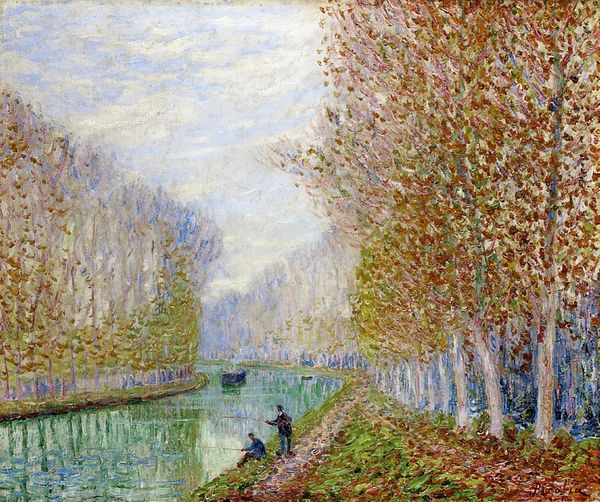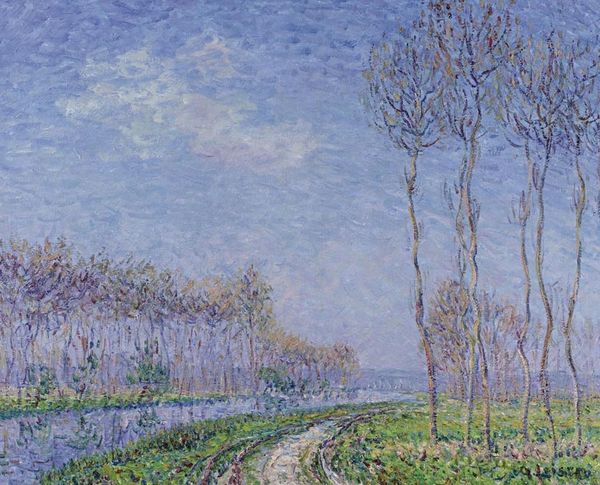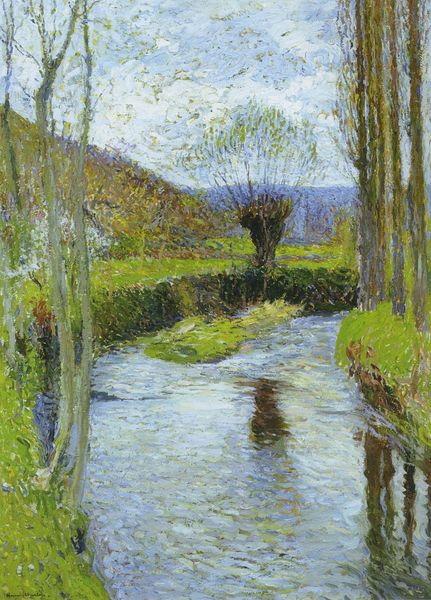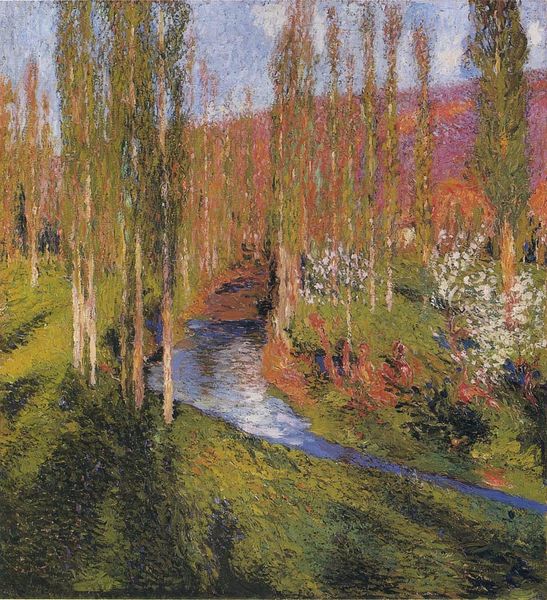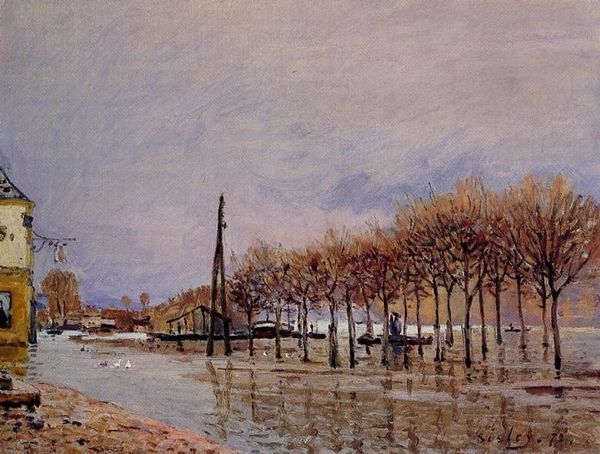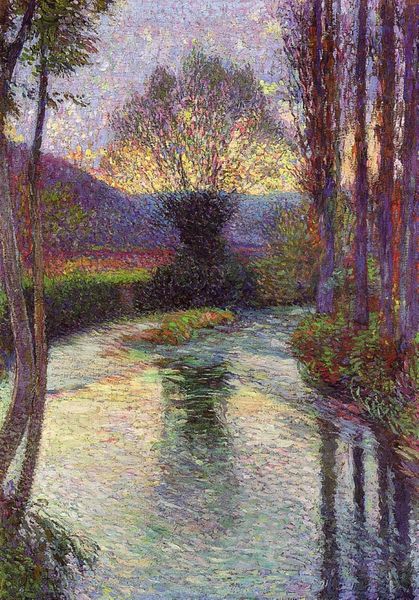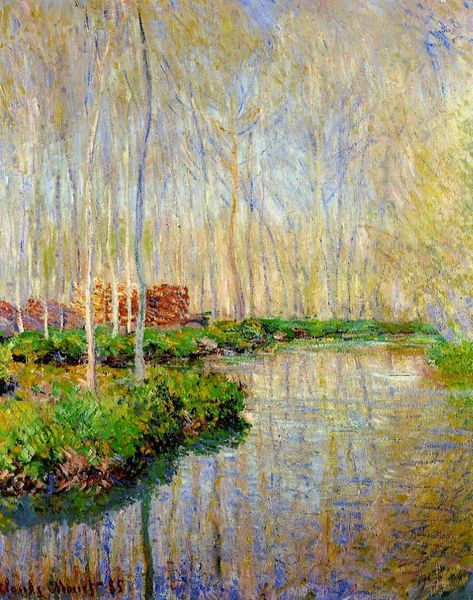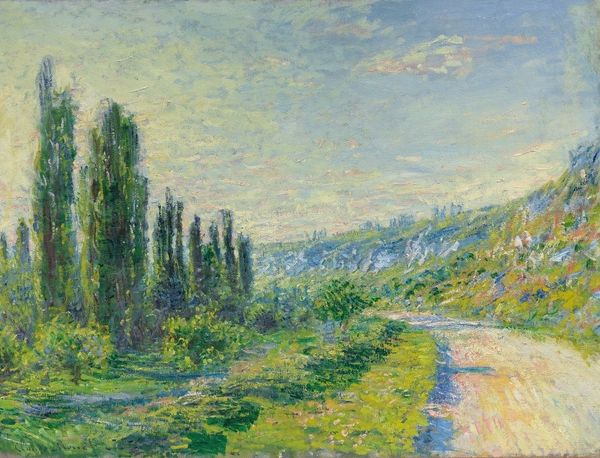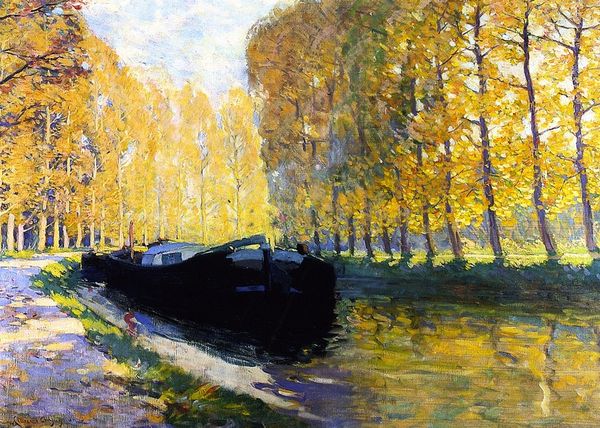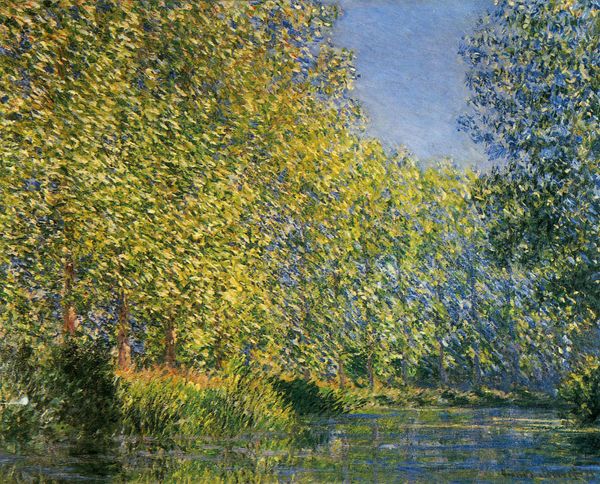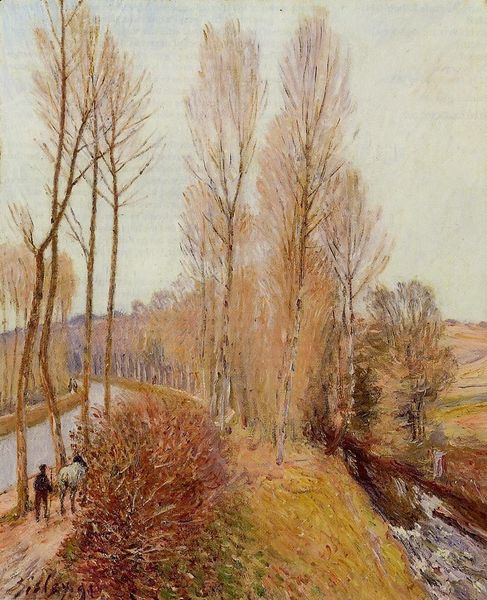
Dimensions: 60 x 73 cm
Copyright: Public domain US
Curator: We’re looking at Francis Picabia’s “Barges on the Loing, Morning Effect,” painted in 1904. Editor: It’s quite dreamy, really. The palette feels muted, almost as if dawn is still breaking and obscuring everything in this lavender haze. Curator: Picabia, though associated later with Dada and Surrealism, here works within a distinct Impressionist landscape tradition, following in the footsteps of artists like Monet with his exploration of light and atmosphere en plein air. Consider his engagement with color and the visible brushstrokes. Editor: Indeed, but I see a specific, almost melancholic, symbolism in the barges. Boats often represent journeys, transitions. Paired with that very specific morning light – dawn representing potential or rebirth – it could symbolize a quiet anticipation, or even the weight of what is yet to come. Curator: I find your interpretation compelling. Looking closely at the construction of the landscape, consider the materiality of the paint itself, how the textured surface is built through the application of layers, one atop the other, not attempting to erase any sign of production or labor. It feels very deliberate, the visible evidence of his process and engagement with materials. This makes the entire experience concrete. Editor: Agreed. The visual language certainly evokes a palpable feeling. It makes me think of liminal spaces—that hazy intersection where waking dreams meet daily life. Notice the repeated presence of the tree symbol, standing guard as pillars of this symbolic location and landscape, providing meaning through structure. Curator: To move beyond simply an art historical framework and toward understanding a wider cultural context. The subject itself — barges on a working river — suggests a society actively engaging with its waterways as arteries of commerce and transportation. There is social context to all those trees, waterways, and barges! Editor: Fascinating to think that what strikes one person as a depiction of "progress" another might view through an entirely introspective lens, viewing an image rife with introspective reflection, perhaps due to what it says of fleeting moments and transitional spaces. Curator: Ultimately, by studying the materiality and the scene represented, we can gain insight into Picabia’s Impressionistic roots. Editor: And how the artist harnesses symbolism to elevate an image to emotional poignancy.
Comments
No comments
Be the first to comment and join the conversation on the ultimate creative platform.
